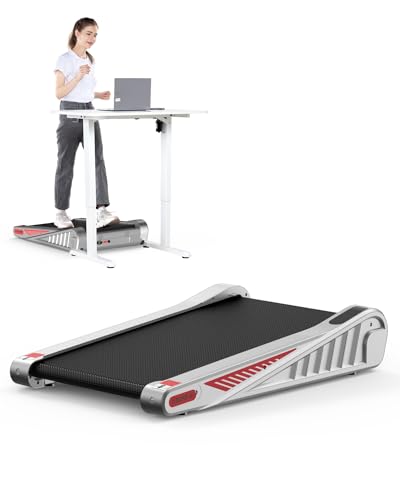Why Non Powered Treadmill Still Matters In 2024

The Rise of Non-Powered Treadmills: A Deep Dive into Their Benefits and Features
In a world progressively focused on health, health, and fitness, the alternatives for exercise devices seem endless. Amongst these, non-powered treadmills are acquiring considerable traction. These machines, which do not rely on electrical power to operate, offer an unique blend of advantages and advantages that deal with a diverse audience. This post explores the functions, advantages, and considerations connected to non-powered treadmills, while also responding to common concerns surrounding them.
What is a Non-Powered Treadmill?
A non-powered treadmill, typically referred to as a manual treadmill, is a type of treadmill that is operated by the user's movement rather than an electric motor. Users power the belt forward by walking or running, making it a flexible choice for cardio workouts. Non-powered treadmills are frequently seen in home gyms, fitness studios, and rehab centers due to their simplicity and efficiency.
Contrast: Non-Powered vs. Powered Treadmills
To understand the growing appeal of non-powered treadmills, it's essential to compare them against their powered equivalents. The table listed below highlights some key differences:
| Feature | Non-Powered Treadmill | Powered Treadmill |
|---|---|---|
| Source of power | Manual (user-driven) | Electric (motor-driven) |
| Cost | Usually more affordable | Often more expensive |
| Upkeep | Low upkeep requires | Greater upkeep requirements |
| Area Requirements | Normally less large | Can be large and heavy |
| Incline Adjustment | Manual adjustments | Automatic settings offered |
| Workout Intensity | Variable; depends upon user effort | Consistent; speeds set by the user |
| Risk of Injury | Lower, promotes natural movement | Higher, due to speed settings |
Training Benefits of Non-Powered Treadmills
- Engagement of Core Muscles: Non-powered treadmills necessitate a greater level of balance and core engagement. Users must stabilize themselves, which in turn includes core strength into the exercise.
- Natural Running Mechanics: As users move the tread, they simulate natural running or walking strategies, minimizing the threats of injury related to fast-paced powered treadmills.
- Adjustable Speed and Intensity: Because the treadmill relies on user effort, individuals can select their exercise rate, making it perfect for both novices and advanced professional athletes.
- Increased Caloric Burn: Research indicates that users may burn more calories on a non-powered treadmill compared to a powered one at similar strengths. Home Treadmills ? Manual treadmills can press the body to work more difficult and to preserve a greater level of strength throughout the workout.
- Durability: Non-powered treadmills are typically more rugged and constructed to last, with less electronic parts that may stop working over time.
Considerations for Choosing a Non-Powered Treadmill
Before buying, potential buyers ought to think about the following functions:
| Feature | Considerations |
|---|---|
| Weight Limit | Ensure it matches your physique and needs |
| Belt Size | A broader belt can supply more comfort, particularly for running |
| Incline Settings | Search for options to change incline for differing exercise strength |
| Frame Construction | Go with long lasting products that can withstand rigorous use |
| Portability | Think about models that are simple to move or keep out of the way |
Frequently Asked Questions (FAQ)
1. Are non-powered treadmills appropriate for everybody?Yes, these treadmills are usually suitable for users of all physical fitness levels. Nevertheless, people with particular health issues ought to speak with a physician before starting any brand-new exercise program.
2. How much do non-powered treadmills cost?Costs can differ widely, usually varying from ₤ 200 to upwards of ₤ 2,000 based upon quality and functions. Manual options tend to be more affordable than powered versions.
3. How do I keep a non-powered treadmill?Maintenance tends to be very little; merely guarantee that the belt is tidy and look for wear and tear sometimes. It's also important to keep moving parts oiled for smooth operation.
4. Can I run or walk on a non-powered treadmill?Yes, non-powered treadmills are developed for both walking and running. Users can change their exercise intensity based upon speed and stride.
5. Do I require to change the incline manually?Yes, a lot of non-powered treadmills need manual changes for incline modifications, enabling users to differ their workouts as desired.
The non-powered treadmill stands as a useful and effective exercise option, perfect for those seeking to improve their exercise regimen without the intricacies of powered makers. By providing an extensive exercise that engages the core and works the body holistically, these treadmills are designed to produce an efficient cardio experience that deals with all fitness levels. Their cost, resilience, and general efficiency for calorie burning add to their increase in appeal.
Whether you are an experienced athlete searching for a harder exercise or a beginner taking those initial steps towards fitness, non-powered treadmills provide a welcoming option to the traditional electric treadmill. With the added benefit of lower upkeep and expense, they deserve factor to consider on your fitness journey.

